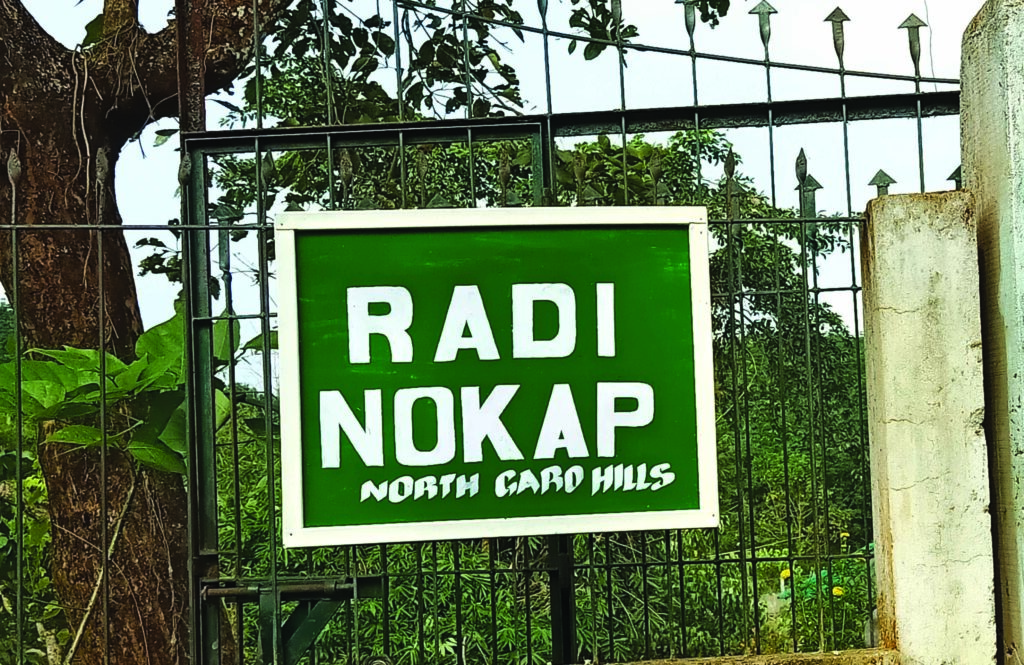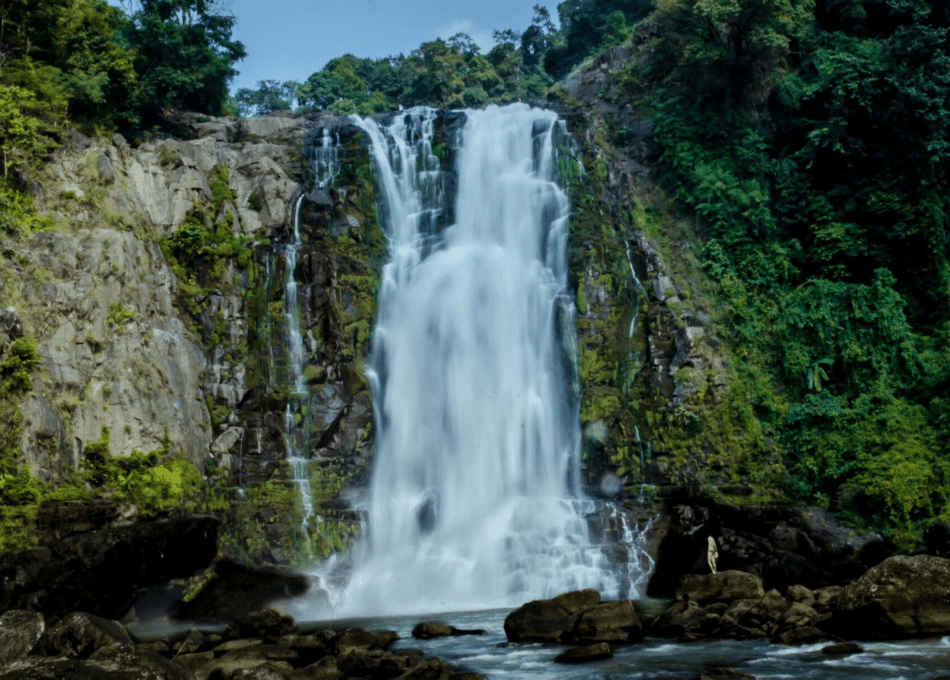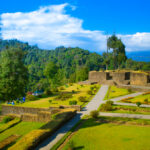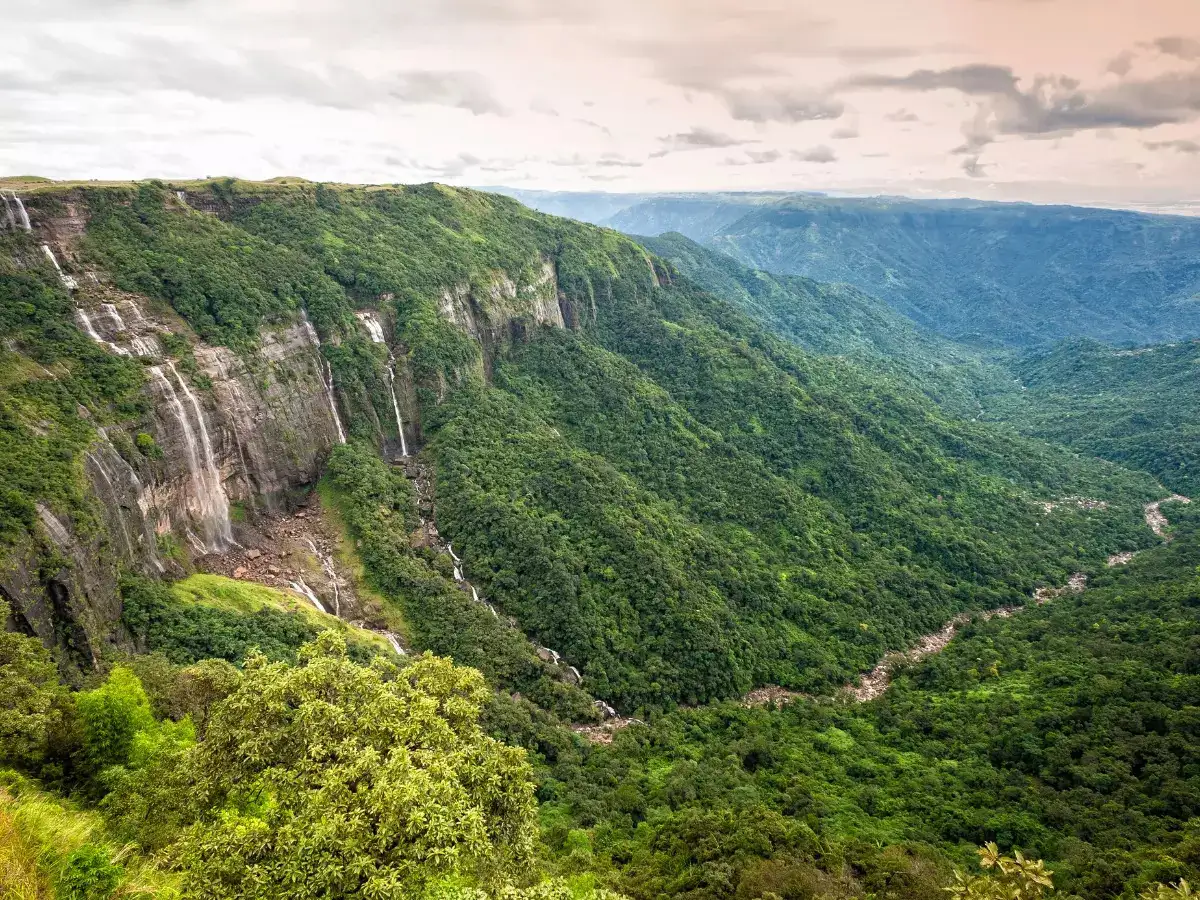Now Reading: Top 5 Best Places to Visiting in North Garo Hills – Waterfalls, Villages & Cultural Sites
-
01
Top 5 Best Places to Visiting in North Garo Hills – Waterfalls, Villages & Cultural Sites

Top 5 Best Places to Visiting in North Garo Hills – Waterfalls, Villages & Cultural Sites
1.Jolding Wari

The tranquil site of Jolding Wari exists among the Mongpangro village which is located close to Mendipathar in Meghalaya. Jolding Wari attracts residents from the surrounding areas and wanderers who stop in Resubelpara town.
The remarkable creation story about Jolding Wari together with its peaceful essence gives the lake its remarkable uniqueness. Local tradition tells that the Great Assam Earthquake which hit on 12th June 1897 formed this lake at Mongpangro. This peaceful water body originated when the earthquake produced the most significant seismic event in India’s history transformed the land through geological processes.
Jolding Wari evolved into something more than an earthform since its genesis; now it represents how beauty emerges from detrimental events through natural processes.
Jolding Wari provides a tranquil environment because it exists amid unspoiled landscapes of lush greenery. Jolding Wari functions as a peaceful sanctuary which appeals to nature enthusiasts and photographers along with city residents who wish to find a quiet escape.
Travelers who visit Resubelpara as the administrative center of North Garo Hills usually schedule Jolding Wari as one of their destinations. The location near Mendipathar benefits visitors since the town includes a railway station serving various parts of the state.
2.Radi Nokat

The sacred location of Radi Nokat stands approximately 7 kilometers outside Resubelpara town within the North Garo Hills part of Meghalaya before becoming a more popular destination for locals and Hindu devotees. This site has recently become a religious center because of its Shivlingams shaped natural rock formations which Hindu pilgrims visit often.
Radi Nokat distinguishes itself through its spread of conical rocks which developed through natural forces to replicate the sacred symbolism of Shivlingam. The stone structures silently stand within greenery while creating spiritual and mysterious feelings in visitors. The location establishes a sacred connection between Lord Shiva and nature because it receives numerous worshipers and sightseers throughout the entire year.
Why You Should Visit
The region of Radi Nokat welcomes both spiritual enthusiasts and nature admirers and offbeat vacationers who find their own interests through its perfect combination of ecology and devotion. The place exemplifies a unique blend of earth science beauty and religious sacredness making it essential for travelers visiting either Meghalaya or the Garo Hills area.
3.Rasna Dare

The natural marvel Rasna Dare rests within the peaceful atmosphere of Rajasimla village. Rasna Dare grants visitors peaceful surroundings with breathtaking views because it functions as both an aesthetic landmark and a destination that attracts adventurous nature enthusiasts.
Visitors encounter a complete experience when they see Rasna Dare. The uninterrupted stream of water plunging onto ragged rocky formations through verdant plant life produces an attractive view alongside peaceful background sounds that help people forget their everyday pressures. Guests can enjoy untouched nature across the area because of its unspoiled state which provides genuine peaceful encounters with the wilderness.
Rasna Dare functions as a much-loved family accommodation because it offers a serene environment along with lovely views. Visitors can spread mats on the open areas surrounding the waterfall while enjoying homemade food while relaxing under the sunlight. The refreshing experience at the falls becomes even more delightful because of the fresh air and cooling mist.
Best Time to Visit
The waterfall reaches its peak vitality and attracts maximum visitors from July to October when monsoon rains end and the water runs fiercely while the vegetation reaches its greener state. Visitors can find tranquility at this site throughout every month.
4.Chitim tim Dare

Chitim Tim Dare rests peacefully within the peaceful terrain of Babukona village which borders the Resubelpara-Krishnai inter-state road in Meghalaya. Chitim Tim Dare exists as a recent finding compared to other prominent waterfalls in Meghalaya with a narrative equally spectacular to its natural surroundings.
The villagers of the area assert that Chitim Tim Dare formed in the flood-soaked landscape of 2014 when the calamitous floods occurred. The surrounding areas suffered from extensive flooding which demolished crops and plantations leading to agricultural losses exceeding multiple crore rupees. Nature created a new spectacle when floods caused earth changes that led to a waterfall streaming through what remained of the destroyed landscape.
Chitim Tim Dare continues to represent natural transformation while welcoming visitors to its mesmerizing beauty.
5.Rongma Gitil

Located in the peaceful village Chachinat is situated a place full of mystery and legend — Rongma Gitil, or better known as “The Fall of the Mother Rock.” This amazing place is not just a natural wonder but a represent of ancient beliefs and with divine stories shared amongst generation upon generation.
It is belief based on local customs there were once two powerful goddess named Rongma and Mring . These mythological sisters, worshiped for their elegance and force, have all the time dwelled in good will, separated by a mysterious ethical spat. The reasons for their quarrel have faded into history, but what is left is the tale of an legendary fight between the two.
Eventually the goddess Rongma lost to her sister, Mring. The defeat being said to have been so terrible and tragic that the earth itself wept on leading to the formation of what is known today as Rongma Gitil—meaning “The Fall of the Mother Rock.” The rock remains as a memorial zur gefallierten Göttin, eine Denkmal in der Geburt aus Legende und Erinnerung.
Related artiicles : Top 7 Best Places to Visiting in East Khasi Hills – Waterfalls, Caves & Cultural Sites
Stay Informed With the Latest & Most Important News
Previous Post
Next Post
-
 01Top 5 Best Places Visiting in Gyalshing – Monasteries, Lakes & Scenic Escapes
01Top 5 Best Places Visiting in Gyalshing – Monasteries, Lakes & Scenic Escapes -
 02Top 5 Best Places Visiting in Panna – Temples, Waterfalls & Wildlife Escapes
02Top 5 Best Places Visiting in Panna – Temples, Waterfalls & Wildlife Escapes -
 03Top 5 Best Places to Visit in Malerkotla – Malerkotla Fort, Sheesh Mahal & More
03Top 5 Best Places to Visit in Malerkotla – Malerkotla Fort, Sheesh Mahal & More -
 04Top 10 Best Places Visiting in Dakshina Kannad for Culture, Nature & Coastal Charm
04Top 10 Best Places Visiting in Dakshina Kannad for Culture, Nature & Coastal Charm -
 05Top 2 Best Places Visiting in Chitradurga for History, Nature & Adventure
05Top 2 Best Places Visiting in Chitradurga for History, Nature & Adventure -
 06Best Places Visiting in Shopian – Explore Top Attractions & Hidden Gems
06Best Places Visiting in Shopian – Explore Top Attractions & Hidden Gems -
 07Best Places Visiting in Narmadapuram – Temples, Waterfalls & Wildlife Escapes
07Best Places Visiting in Narmadapuram – Temples, Waterfalls & Wildlife Escapes














Pingback: Top 5 Best Places Visiting in Ri Bhoi – Explore Meghalaya's Hidden Gems